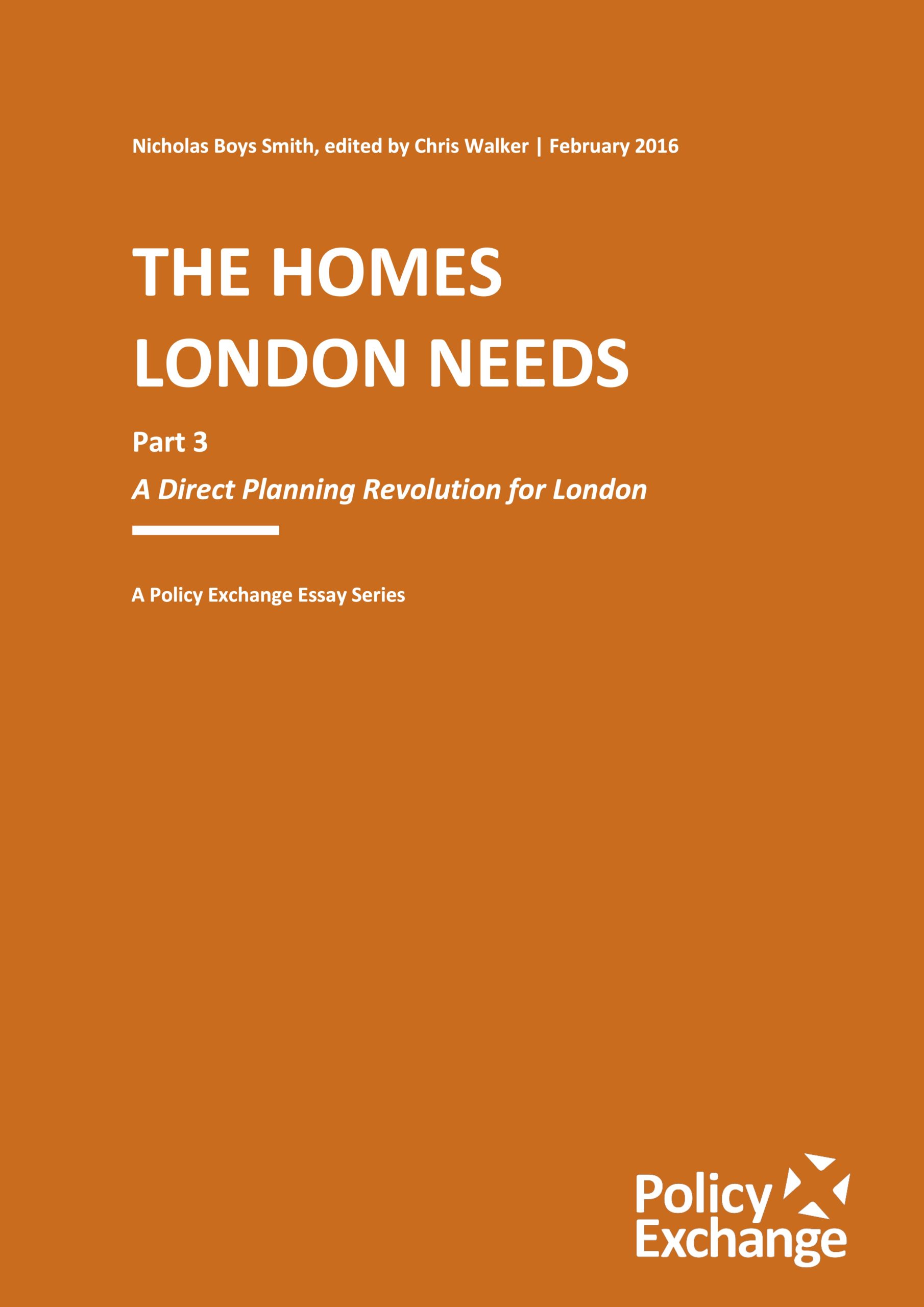
The Homes London Needs: Part 3
One of the key reasons we have a housing crisis is because new housing, new neighbourhoods and new multi-storey blocks are consistently, unambiguously and predictably unpopular with most people most of the time. Politicians have been asking; “how do we build more homes?” They should have been asking; “how do we make new homes more popular?” – making new homes more popular and reducing local opposition to them is, ultimately and profoundly, the way to build more.
Consistent and strong majorities of the public in the UK and in London prefer a certain built form – terraced housing or low to mid rise blocks – on street layouts. Such a built form and style could very easily provide sufficient homes to meet London’s housing needs. And yet we don’t build it – or at least not sufficiently or in such a way as to garner widespread public support let alone enthusiasm. Even some professionals are prepared to voice concern.
So what on earth is going wrong? What noxious cocktail of supply, demand, investment and regulation is leading to this?
Land supply for housing is being rationed
The British planning changed radically in 1947. Instead of demanding consistency of exterior form, the state controlled the right of private landowners to develop their land at all , via the tool of the local plan. Local plans are meant to be comprehensive, but also to leave room for case-specific interpretation. Individual planning decisions are made in the light of this plan and of a large corpus of housing and building regulations which has increasingly focused on the inside of buildings more than the outside. The process has proved slow, inconsistent and hard to predict.
The economic consequence of this approach has been to limit the supply of land, delay building and, absent wide-scale government intervention, shift most of the value of a building from its built form to the land on which it stands or, more precisely, the permission which has (or has not) been granted to that land. For example, in 2010 granting planning permission to agricultural land in or near outer London increased its value by an absurd 20000% – from around to £19,000 a hectare to more like £4million per hectare.
A design disconnect: what people want vs what professionals build
Planners and architects value different attributes and (provably) prefer different types of buildings to most people. In 1987 David Halpern, then a young psychologist, was conducting an experiment into how repeated exposure to an image changed perceptions of it. A group of volunteer students were shown photographs of unfamiliar people and buildings. They were asked to rate them in terms of attractiveness. Some of the volunteers were architects and some were not. And as the experiment was ongoing a fascinating finding became clear. Whilst everyone had similar views on which people were attractive, the architecture and non architecture students had diametrically opposed views on what was or was not an attractive building. The architecture students’ favourite building was everyone else’s least favourite and vice versa. And the disconnect also got worse with the longer architecture students had been studying.
All roads lead to high density development
Under the 1999 Local Government Act local authorities and other public bodies are required to secure ‘best value’ when disposing of assets and land. ‘Best value’ was deliberately defined broadly to permit local and specific variation. The problem is that, absent hard and fast rules, local authorities and public bodies have typically found it safest to focus on higher initial land value (and thus much quicker cash returns) over long-term (but ultimately higher) investment returns accruing over time via a co-investment.
In practice, too often the best value test thus turns into a maximum density test. In a prompted survey of development professionals we ran last year on the barriers to conventional street-based redevelopment, the ‘Best Value’ test emerged as the second most important barrier, with a barrier score of 7.3 out of 10. The Managing Director of First Base, Elliot Lipton, commented starkly, ‘If they sell they are constrained by best value considerations to maximise density.’
Misconceived housing regulations are creating perverse outcomes
The density targets and design rules in the London Plan and the London Housing Design Guide then often make it hard to build conventional high density normal streets.
Requiring lifts in all apartment buildings makes it more expensive to recreate the typology typical of many dense, street-based areas of London with apartments on a number of floors off one staircase. This also incentivises higher building as the cost of lifts does not increase substantially as more floors are added, once the initial cost is incurred. Rules against staircases being too narrow or too steep make it harder to build the conventional tall but thin London terraced houses A requirement that ten percent of homes be fully wheelchair accessible and for all homes to be built to ‘Lifetime Home’ standards biases the system in favour of large blocks
‘Given their enduring popularity (and value) you might suppose that they would provide the ideal model for today. But, sadly, modern planning and building regulations outlaw some of the key design features…’
So what should be done about all this?
The GLA should lead a city-wide programme of popular home-building and more effectively empower local people actively to influence what gets built.
The next London Mayor should do a number of things. Firstly he should rewrite the London Housing Strategy and the London Plan to be far shorter, clearer and more consistent with fewer but far more clearly defined and consistent rules. He should abolish the density targets used to justify a range of tower blocks and abolish the rules in the Housing Supplementary Planning Guidance which create perverse incentives against the most popular forms of housing or at the very least give local people the right to override such rules. Examples would include open space rules and access requirements.
Secondly he should spearhead a city-wide programme of popular, nearly always street-based, home-building on brownfield sites and post-war estates and in partnership with long term investors. So he should identify and prioritise for co-design two-dozen publicly-owned strategic brownfield sites for comprehensive redevelopment, setting examples to follow. The approach should uphold democratic control of estate regeneration via (i) co-design with a community and obligatory neighbourhood plan style referendums and (ii) presumption for a locally approved design-code approach in estate regeneration.
Thirdly he should signal greater willingness to use his powers of call in, making within the first two weeks of the mayoralty a clear public statement that super-density developments or residential tower-blocks that are not able to demonstrate very convincing evidence of local support are highly likely to be called in and rejected by the Mayor (particularly beyond zone 1 and perhaps in 4 or 5 other areas).

